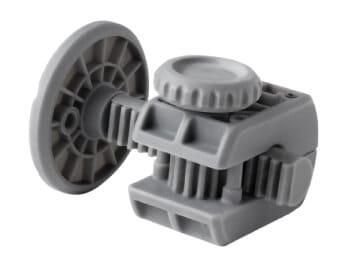
White Standard UV Cure SLA Resin is a photopolymer material used in Stereolithography (SLA) 3D printing. SLA, one of the first 3D printing technologies developed, uses a laser to cure liquid resin into hardened plastic in a process called photopolymerization. This resin has been a staple in the SLA printing process due to its fine details and smooth surface finish.
This resin is composed of a mixture of monomers and oligomers – small and large molecules that form long chains during the curing process. These are mixed with photoinitiators (substances that react to light) and various additives to improve its properties. When exposed to UV light, the photoinitiators trigger a reaction that links the monomers and oligomers into a solid polymer.
White Standard UV Cure SLA Resin is best used for applications requiring high detail and a smooth surface finish, such as in prototyping, jewellery making, and art applications.
Jewellery Making: This resin is extensively used in jewellery making for creating intricate, detailed pieces. The ability to print fine features makes it ideal for complex designs that are difficult to achieve with traditional manufacturing methods.
Prototype Applications: In the manufacturing industry the resin is used to make prototypes to evaluate the functionality of a design before production. Standard resin can provide parts close to the final production parts.
Future developments in SLA resins, including White Standard UV Cure SLA Resin, are likely to focus on enhancing material properties like durability, flexibility, and reducing sensitivity to UV degradation. Advances may also aim to expand the range of applications, such as in biocompatible materials for medical use.



781 high st. reservoir vic 3073, australia